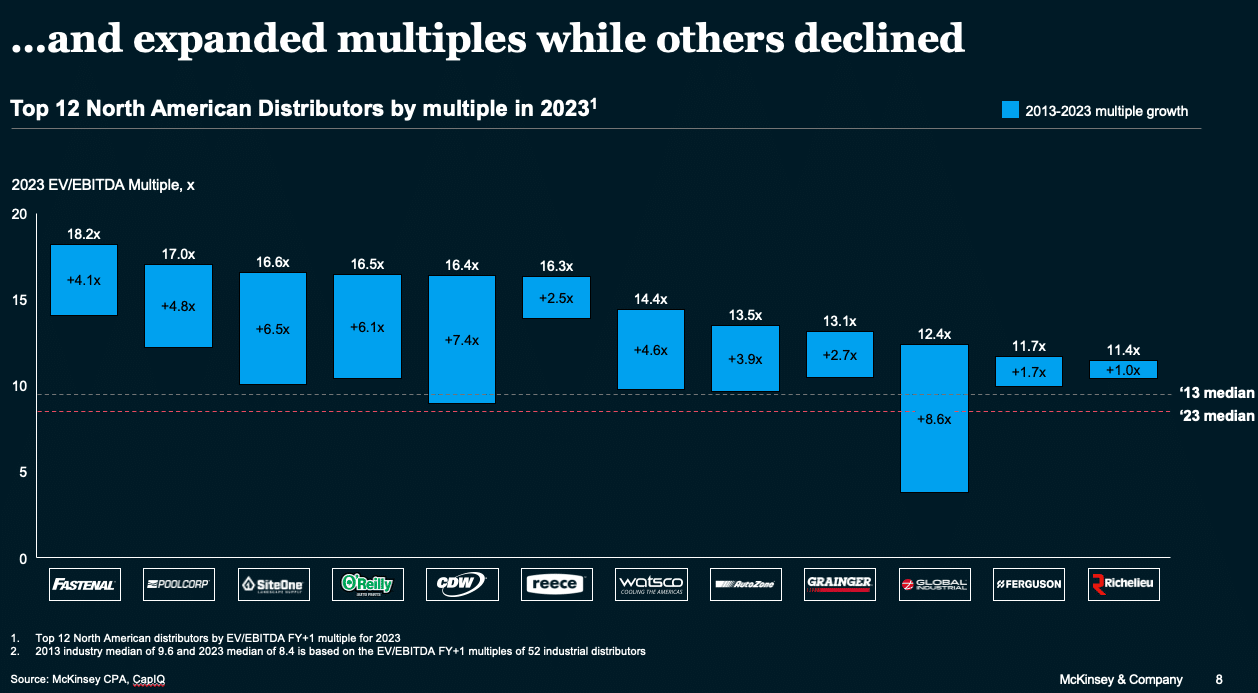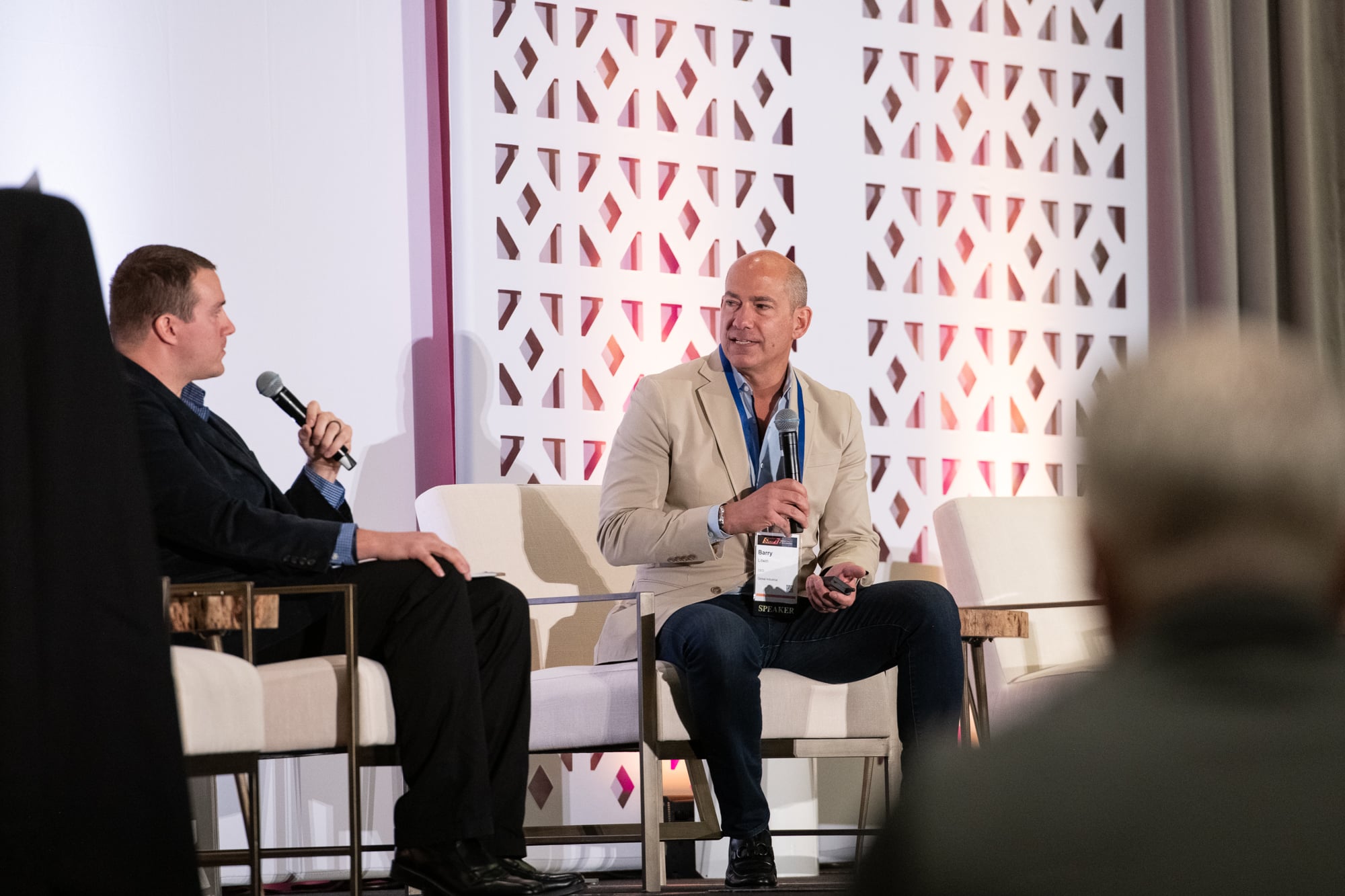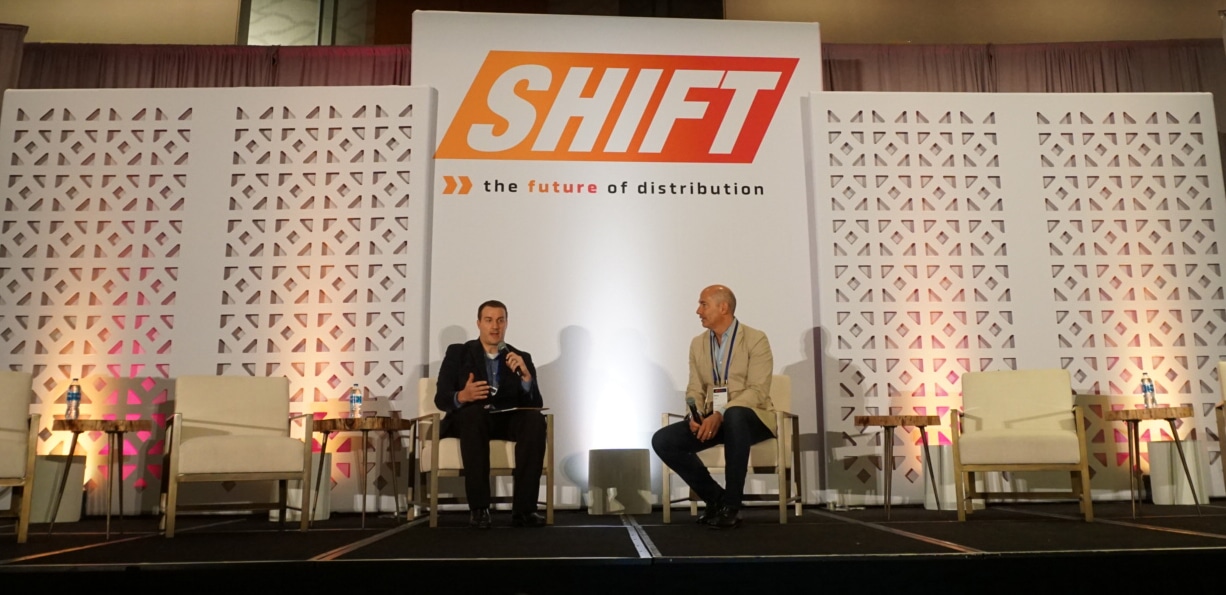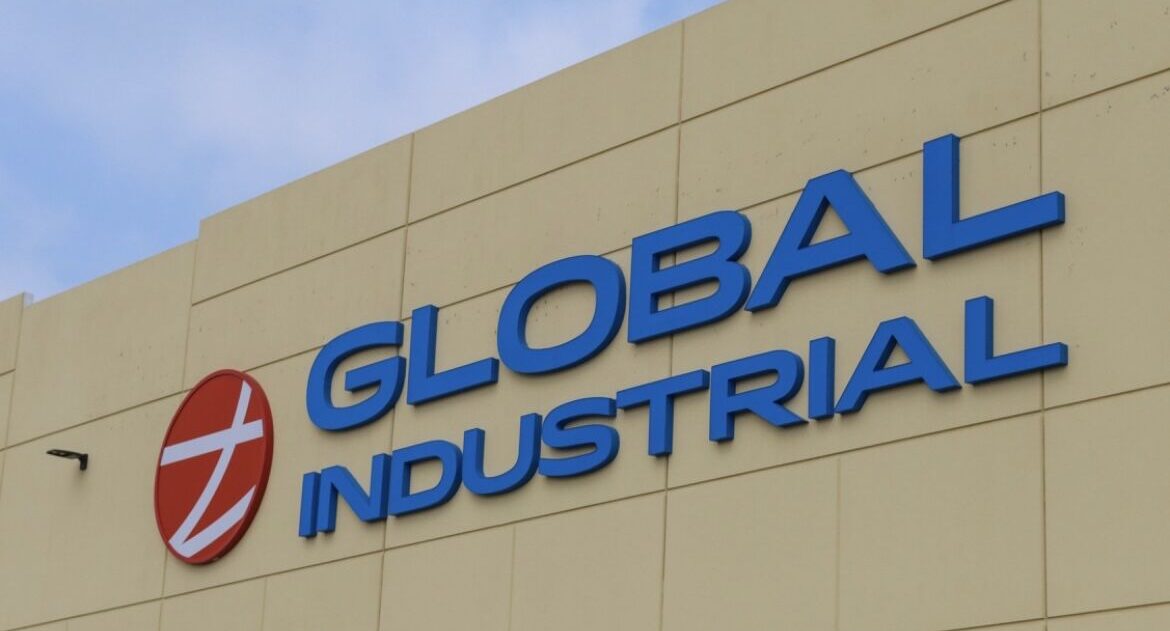Business transformation stories have long been a hallmark of MDM, as we know our audience appreciates learning from examples of distributors that have applied change management tactics to drive the company forward.
One of the more exciting and ongoing examples we’re keeping an eye on is from Global Industrial Company, No. 26 on MDM’s 2023 Top Industrial Distributors list.
Rebranding from Systemax in 2021 to reflect its focus on industrial and MRO supplies, the Port Washington, New York-based company has seen its annual revenue climb from $897 million in 2018 to $1.17 billion in 2022, and its operating margin likewise grew 210 basis points in that stretch (9.0% in 2022).
Earlier this year, Global Industrial made its first acquisition in eight years and opened a large distribution center, alongside continued progress in the distributor’s multi-year sales model transformation. The many initiatives within the latter have the company poised to further climb our Top Distributors lists, and were reason to invite CEO Barry Litwin to share his company’s story in a fireside chat at MDM’s SHIFT conference, which was held Sept. 18-20 in Denver.
Litwin became the company’s Board Director in 2017 and then its top executive in January 2019, and he has since led its evolution. In this MDM Premium piece, we’ll examine some of the company’s recent story and share my on-stage SHIFT conversation with Litwin.
Global Industrial Company Then & Now
Also at SHIFT, a keynote presentation from McKinsey & Company Distribution Practice Partners Kevin Sachs and Alex Abdelnour singled out Global Industrial as an outperformer among large distributors, placing it among the top dozen North American distributors by enterprise value/EBITDA multiple for 2023.
The duo’s presentation showed that Global Industrial’s 12.4x multiple as of mid-September ranked 10th of those 12 largest firms, while its 2013-2023 multiple growth of +8.6 was the best of the bunch. The company is certainly doing something right.

“Global Industrial started with a lower multiple than everybody else in 2013,” Abedelnour detailed at SHIFT. “However, in 2017, they divested a business unit that was more focused on IT (European Technology Products Group). So. lower margin, lower growth. They focus on MRO, which is higher growth — higher margin and profitability, than their original business. Investors really liked that. They doubled down on private label, expanding profitability even more, and investors rewarded them. And you can see within the span of a few years, they’ve moved from sub-4x multiple to eight to where they are today. So, a pretty exciting story.”
Premium: Global Industrial Continues Sales Structure Diversification (July 2022)
“We used to be an IT infrastructure company. Three-and-half billion dollars (in revenue), but not making a lot of money,” Litwin told SHIFT attendees. “So we divested all of those businesses, and what we were left with was effectively a small B2B distribution company, just $800 million at the time.”
The last piece of those divestments was in September 2018 via the sale of Systemax’s France-based IT business, completing the company’s transition to a pure-play industrial supplies and MRO distributor. The rebrand to Global Industrial Company came less than three years later, which involved changing the firm’s New York Stock Exchange ticker symbol to GIC on June 21, 2021.
“We’re a company today that has a very defined set of initiatives and goals that we map each year over a three- and five-year basis,” Litwin said. “A lot of organizational momentum.”
Litwin elaborated that the company is also much more engaged today from an associate perspective. He detailed that between 2018-2019, its company-wide surveys showed about 50% staff engagement. Today, that figure is north of 75% across its 1,600+ employees.
Meanwhile, GIC has continued to expand its product offering which today spans over 1.7 million different products in 21 industrial and commercial categories. Of its more than 400,000 customers, none individually represent more than 2% of the company’s sales.
Private label, which has seen a 16% CAGR over 2018-2022, now accounts for approximately half of the company’s annual sales.

Accelerating the Customer Experience (ACE)
Underpinning the new-look company’s direction through its expansion has been its ACE strategy, which stands for Accelerating the Customer Experience.
Within that, Litwin detailed that while the company’s sales model still uses the “land and expand” principles of acquiring new eCommerce customers and driving order frequency, that model has now become a lot more sophisticated and better. From a sales organization perspective, what’s changed is that the managed group has evolved from “farming” existing accounts to one that has opened up more opportunities to bring large, enterprise accounts into the business.
To do this, GIC partitioned the sales organization into existing business and new business and ramped up its outreach to enterprise-level buyers through group purchasing organizations.
“That change was significant,” Litwin emphasized, “because the salespeople that we had on the ground were not the same kind of people who could talk to sourcing professionals. So we built up that organization and have been scaling up larger size accounts over the last two years. We are really pleased with the progress, and have a lot more to go.”
From a demographic perspective, one of the other big changes was expanding from a focus on manufacturing customers to one that incorporates other strategic markets where GIC can drive MRO and back-office products. The first such markets the company picked to pursue outside of manufacturing were hospitality and healthcare. That movement created new opportunities for GIC to expand, but it also needed to develop teams specific to those areas.
GIC further bolstered its manufacturing, hospitality and government customer base with its $69 million acquisition of St. Louis-based Indoff Inc. this past spring. As a distributor of products and solutions across material handling, commercial interiors, business products, energy solutions, appliances and promotional apparel & printing, Indoff added about $180 million in annual revenue and over 300 salespeople to GIC.
“So between having a very strong organic strategy, we’re able to layer on strategic acquisitions to help fuel our growth, both in terms of driving product sales and being able to create new customers through greater sales representation,” Litwin said. “It continues to evolve.”

Global Industrial’s ACE strategy is propped up by five pillars that Litwin outlined:
- A leading revenue model: A multi-channel model GIC continues to hone and improve upon to create more revenue and more customer activities
- Leading products: Particularly, leveraging GIC’s private label brand
- Fulfillment delivery experience: Not just speed of delivery, but how efficiently it’s configured and transported, especially when it comes to the big and bulky products that comprise much of GIC’s orders
- Customer experience: The day-to-day customer service experience GIC offers
- Product knowledge: People don’t just come to GIC for the transaction, but to figure out how to configure something within their warehouse, logistics or transportation
Within each pillar, GIC built out key initiatives it determined must be pursued to win more business over the next few years.
“That was the framework, and frankly, is something we had build into a three-year-plan, a five-year plan, and now do a refresh on each year as we go through,” Litwin noted.
Premium: Inside Global Industrial’s ‘Engaged’ Sports Marketing (August 2023)
Voice of the Customer
Amid B2B buyers’ preference for a digital-first and self-served buying experience accelerated coming out of the pandemic, distributors have put a premium value on voice-of-the-customer research. Litwin said finding a self-evaluation measurable was a critical first step in creating the company’s ACE strategy, and it settled on a customer satisfaction (CSAT) index as that cornerstone metric.
The next step was to find a way to conduct and gather that data. So, GIC began a process to survey daily end-to-end transactions, collecting CSAT data on time elapsed between the time a customer visits the website to the time they receive a product, to their input on damaged shipments, packaging, customer service quality, and more. The company then takes those data points to inform how it can improve in each of those areas, with those insights fused into the ACE strategy down to a local level.
“What we’re able to do is continue to remove roadblocks in the experience,” Litwin said. “Sometimes we ended up finding that it’s a manual process and we end up taking a digital approach.”
He added that GIC strives to create more self-service capabilities in areas like cancellations, which is was something that previously required a customer to call customer service. Now, customers have the ability to cancel orders with the press of a button on the GIC website.
“That all translates into a weekly CSAT number that we can measure,” Litwin said. “And that’s tied to overall company performance and compensation.”

The Skills to Drive Initiatives Forward
In a 2022 interview with CEO Magazine, Litwin said that GIC had implemented no less than 21 strategic initiatives over the previous three years to transform the business.
But having the right ideas is only part of the change management equation. Making them stick and sustainable requires having the right talent in the right place to drive initiatives forward. Litwin said the first question the company had to ask itself was what key roles were needed for those initiatives to succeed.
“When you’re trying to change, you quickly realize that some of your best people have already been occupied with so many tasks, that there might be one task that you’re trying to drive that realistically, they’re not able to spend time on,” Litwin noted. “So you have to really look first at the senior structure and ask, ‘Do I have senior representation in the areas that we want to fundamentally change?’”
To address this, GIC incorporated “workforce planning” into its overall budgeting process, which included a new performance management process. It asked hard questions about if certain individuals have the ability to deliver on initiatives/projects and how people in the organizations feel about those individuals. At the senior level, the company brought in staff that had been through similar initiatives at other large organizations, tasking them to establish best practices at GIC that would ensure a strong talent pipeline for the talent it needed.
From there, GIC was able to establish a new set of core company values, which include the following:
- “Rolling up the sleeves”: Litwin said it’s long-been part of GIC’s culture, promoting the mindset of “let’s just roll up our sleeves and get stuff done.”
- “You’re Free to Succeed”: Tied to GIC’s culture notion that everyone in the company can become promoted to the next level and the partnership between management building a roadmap for them and individuals following it.
- “The extra chip” – An adage that GIC wants to “add an extra chip in the cookie,” adding extra value to products and services that can be priced accordingly.
- “Tap into your superpower” – Litwin: “Everyone in the company has a superpower. We want to see you use it — show us a project, something where you solved a customer’s problem.”
“It’s not just about building the right senior talent team,” Litwin said. “You need the processes in place to really activate it and grow it. I think that has been some of the underlying and ongoing work we do to help drive the business forward.”
Trust the Process
Given the number of initiatives Global Industrial in Litwin’s four years as its CEO, I was compelled to ask him if any of them have failed, and if so, what lessons were learned.
“Not everything works well. Things don’t always go as planned,” he said. “The biggest thing I’ve leared over time is to not get wedded to an idea. And just like a great offense in football, if you’re not getting the ball to your position players and you as the quarterback are making all of the decisions, you don’t have a very good team.”
Litwin detailed that driving change management involves the following lessons:
- Allow key people in the organization to have ownership of projects
- “You have to fall in love with the process of the ebb and flow of initiatives”
- Have clarify in terms of what the goal is
- If things are going south, learn why
On that final lesson, Litwin elaborated that when something isn’t working, the next step isn’t necessarily to kill that initiative. Rather, he suggests pushing a little further, as it may just take more time to gain traction.
“Most corporations spin out of an initiative the minute they see failure. I’ve learned on the marketing side is that it takes time for customers to really adapt to what you’re trying to change to. So we give it a little bit extra and make sure an initiative is absolutely working or not. Over time, we can either deselect those initiatives from our playbook, or double down on an investment and go further.”

Litwin’s Biggest Fear
Any business process change is hard. It’s often met with resistance and its success takes a stick-to-it quality when things get bumpy. At Global Industrial, Litwin said that measuring company engagement has been a major indicator of how well the company is doing right by its associates. Doing so enables it to maintain a cohesive talent roster at a time when distributors and manufacturers are hyper-competitive for qualified staff.
“In an environment where the best talent is always being sought out and getting the recruiter calls, we don’t want the attrition rates of our best talent to accelerate. We want to make sure out people are staying engaged and are working on the best projects.”
Litwin shared that GIC’s talent is certainly engaged, detailing that 90% of employees responded affirmatively to the following company-wide set of questions: “Do I know what success looks like for me? Does my manager give me clear goals? Do I know where the company is headed?”
“That’s the most proud answer that I hear every year,” he said. “My biggest fear as the CEO — what makes me wake up with night sweats and dreams is somebody coming to me and saying, ‘Where are we going? I don’t know what the roadmap is.’”
On the Horizon
Speaking of where Global Industrial is going, that’s the final question I had for him. Where does the company want to be two or three years from now in terms of its value-add and how it engages with customers?
Litwin said that while GIC is a publicly traded company, it doesn’t usually provide long-term fiscal guidance in its quarterly earnings reports. However, he acknowledged that once Global Industrial surpassed $1 billion in annual revenues in 2020, it began focusing on “the next billion.”
“We think we’ve made a clear path to keep moving forward there,” he said. “For us, it’s really about updating and refining, executing the organic strategy and part of ACE each year.”
He added that GIC is looking at acquisitions as a key enhancement to help grow overall customer share where it makes sense.



